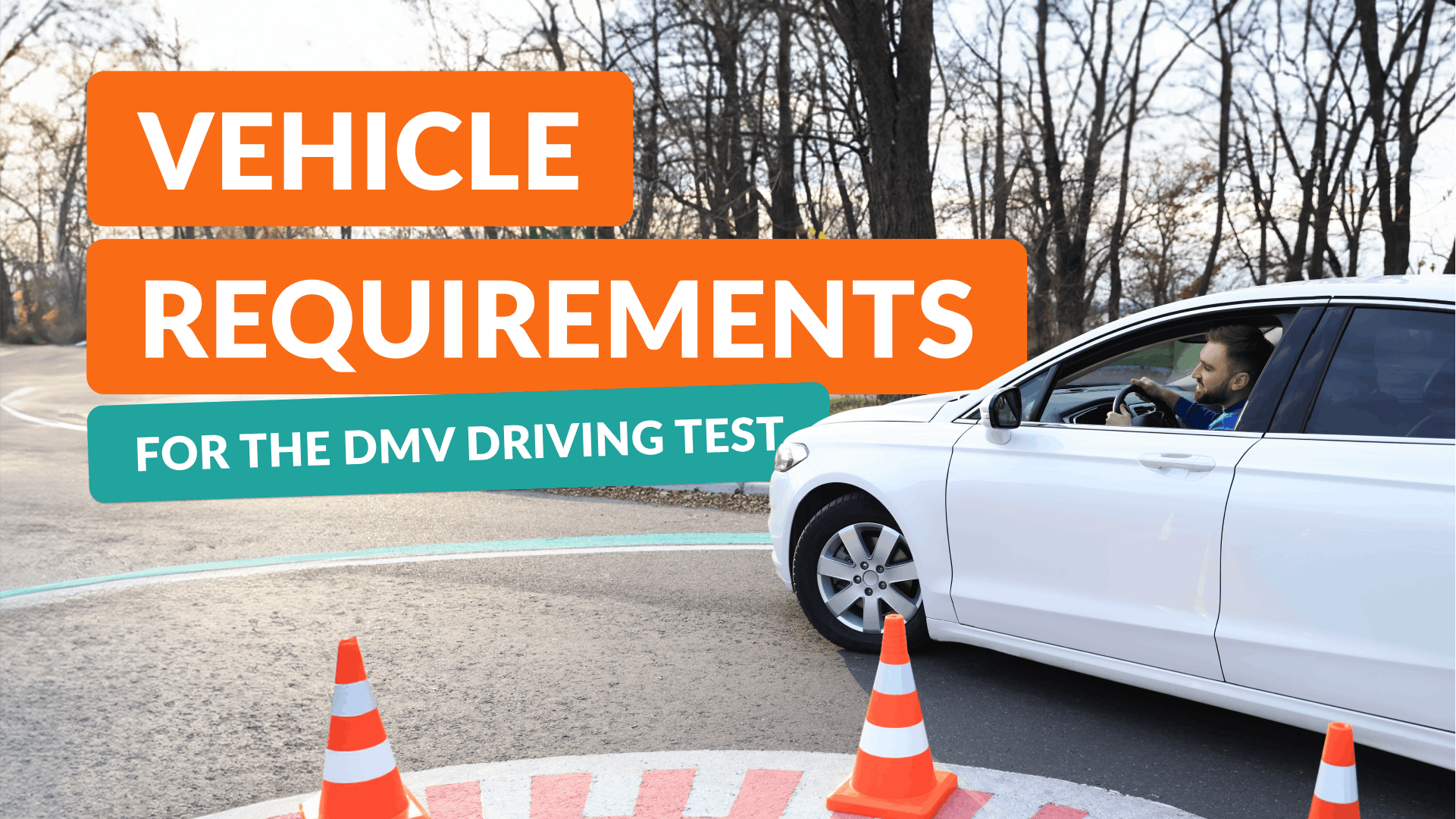
Car Requirements for the Driving Test Explained
Before your road test, a DMV examiner will check your vehicle for about 5 to 10 minutes in the DMV parking lot. They look over the car’s exterior for safety, verify your documents, test key safety features, and may ask you to demonstrate that the controls work.
If your car fails the check, you won’t be allowed to take your test – so make sure you read through all the requirements below.
Safety Requirements
- Seat Belts – Look for tears and ensure each belt retracts smoothly and locks when pulled sharply. The DMV examiner will tug the belts to confirm they lock under sudden force and check the buckle mechanism.
- Brakes – Listen for any unusual sounds like grinding or squeaking when braking. When pressed, the brake pedal should feel firm and not sink to the floor. Check the brake fluid level in the reservoir; low levels can indicate a leak or worn brake pads. The examiner will test the brake’s responsiveness and check for any fluid leaks or obvious signs of wear and tear.
- Tires – Inspect tires for tread depth and proper inflation. Look for any signs of damage, like cuts, bulges, or excessive wear. The examiner will visually inspect the tires for tread depth and any obvious damage that could compromise safety.
- Doors – Check for the doors to open smoothly from inside and outside without any gaps and for the locks to work correctly.
- Seats – Check that the driver’s seat adjusts easily and locks securely in position. Make sure all seats are firmly anchored with no excessive movement or instability. The examiner might adjust the driver’s seat to confirm it locks into place.
- Windshield and Windows – Windows must be clean, with no major cracks/chips. Wiper blades should work effectively.
Operational Requirements
- Lights – Check that your headlights, tail lights, brake lights, and turn signals are working. Replace burnt-out bulbs and clean the lenses for better visibility. Make sure that your headlights are properly aligned and not pointing too high or too low. The examiner will check all lights during the pre-test vehicle inspection.
- Horn – Test your horn to see if it’s audible enough. It should have a clear, strong sound, not weak or muffled. Your examiner will ask you to honk the horn to hear if it functions correctly.
- Mirrors – Mirrors must be clean, intact, and properly adjusted for your seating position. They should provide a clear view of the rear and sides of your vehicle.
- Dashboard warning lights – Watch for active warning lights. Serious engine or brake warnings could disqualify the vehicle.
- Steering System – Check for any unusual stiffness or looseness in the steering, and listen for noises when turning. Also, make sure the power steering fluid is at the appropriate level.
- Clutch and Gearbox (for manual vehicles) – Check if the clutch engages and disengages smoothly without slipping and that all gears shift smoothly without grinding.
Documentation Requirements
- Registration Sticker & Document: Confirms valid registration in your state.
- Proof of Insurance: Must meet state law requirements.
- License Plate(s): Properly attached with current registration stickers.
Double-check these documents at least a day before your test to avoid last-minute surprises.
What If Your Vehicle Fails the DMV Check?
- Immediate Notification: The examiner will inform you if your vehicle fails the check, specifying the reasons.
- Rescheduling the Test: You will be able to reschedule your road test. This gives you time to address the issues that led to the failure.
- Vehicle Correction and Re-evaluation: If the issues are minor and can be fixed on the spot, the examiner might allow a quick re-check.
- Alternative Vehicle Option: If you have access to another vehicle that meets the DMV requirements, you may be allowed to use it.
Be aware that if you fail the vehicle check and reschedule your exam, you will need to pay the road test fee again.
Do You Need to Bring Your Own Car ?
In many states, you must provide your own vehicle for the driving exam. This means you are responsible for making sure it meets all the requirements listed and that it passes the vehicle check process.
If you don’t have your own car, renting one might be a good option. Try contacting a local driving school first, since they often have vehicles you can use. If you go through a rental company, make sure the car’s insured and passes safety checks, and call ahead since many DMVs don’t allow rentals.

Avoid beginner mistakes with expert advice
Build road test confidence and reduce anxiety
Make at-home lessons a success with our parent guide
Recommended articles
Ace your DMV test, guaranteed
Want to Be the Top School in Your Area?
- Simple & automated admin
- More time for teaching
- #1 learning materials for students


